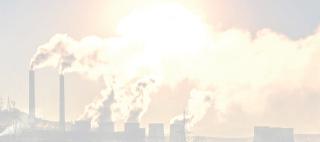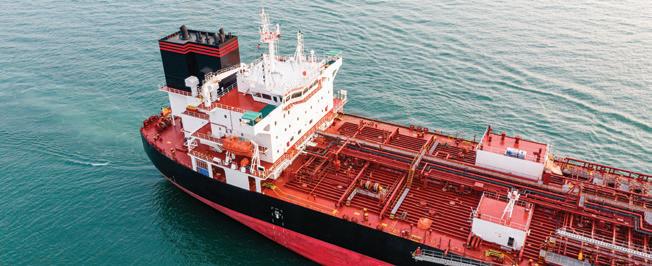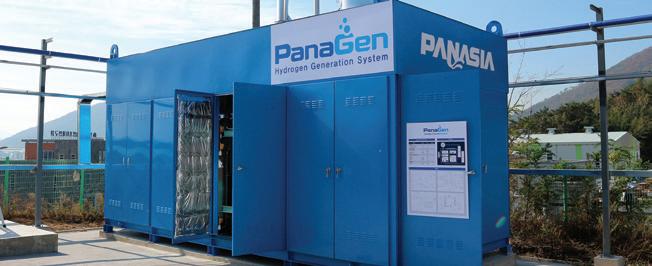Carbon Neutral Solution for Marine

Hydrogen Generation System & Carbon Capture, Utilization and Storage

ENG
Notes:InternationalEnergyAgency(IEA)forecastsofkeytechnologiesforCO2emissionreductions(IEA2019)
The aim of the Paris Agreement is to reduce the impacts of climate change by keeping the global temperature rise below 2℃ above pre-industrial levels. To that end, the agreement requires a rapid reduction of greenhouse gas emissions.
The aim of Carbon Capture, Utilization and Storage (CCUS) is to limit the impacts of climate change by capturing carbon dioxide, and the captured CO2 is used for commercial applications.
Carbon Capture, Utilization and Storage(CCUS) System


The Carbon Capture, Utilization and Storage system for ships is a system that captures and utilizes carbon dioxide generated during combustion of fossil fuel used to propel and generate power for ships and reforming to produce hydrogen, in order to reduce the amount of CO2 released into the air.

Reference: Implementation prospects of the Paris Agreement
Reference: Predictions for greenhouse gas emissions mitigation measures

CCUS is predicted to contribute to 19% of the total CO2 emission reductions globally by 2050. Without CCUS, the cost of reducing emissions would increase by more than 70%. In other words, CCUS will play a pivotal role in reducing CO2 emissions.
PANASIA’s will lead the way to a carbon-neutral world.
Features
High purity of product CO2

Compact size of tower and configurations
Low energy consumption
Simple and reliable operation
Full automation
PANASIA’s Pan-CCUS™
참고: 국제 에너지 기구(IEA) CO2 배출량 감소 핵심 기술 예측(IEA 2019) +0°C +1.3°C +1.5°C +2°C +3°C +4°C Global mean temperature increase by 2100 +1.5°C Paris Agreement Goal Pledges & Targets C0 2 emission reductions (Gt) Time We Are Here 1.1°C Warming in 2020 Pre-Industrial Average +2.6°C +2.1°C +3.3°C Optimistic Targets +2.1°C +1.7°C +2.7°C Current Policies +2.9°C +2.1°C +3.9°C 2010 10 20 30 40 50 60 2020 2030 2040 2050 CCS Renewables Nuclear Power generation efficiency and fuel switching End-use fuel switching End-use fuel and electricity efficiency
Carbon Neutral Solution forShip 01 6 Carbon Neutral Solution for Ship PANASIA
REGULATION TECHNOLOGY
EEDI (Energy Efficiency Design Index) & EEXI (Energy Efficiency Existing ship Index)
˙Setting targets to reduce CO2 emissions per transport work by the nth year below the 2008 peak
˙CO2 emissions generated by a ship when transporting 1 ton of cargo 1 nautical mile; for 13 types of ships with gross tonnage more than 400 tons, the EEDI must be calculated for each new ship
˙The EEDI applies to ships built since 2015, targeting a 30% reduction of greenhouse gas emissions by 2025 (with the base year of 2013)
IMO’s GHG Strategy

IMO’s
❶ Pre-treatment of Flue Gas
Emission pathway in line with IMO’s GHS strategy
❷ CO2 Absorption
CII (Carbon Intensity Indicator)
Carbon Intensity Indicator (CII)
˙The Carbon Intensity Rating scheme is applicable to existing ships operating internationally above 5,000 GT.
˙The Carbon Intensity Indicator (CII) is a measure of how efficiently a ship operates based on vessel traffic data.

˙Each ship will be given an annual rating ranging from A to E, based on the annual CII rating achieved by the ship against the annual CII requirement.
Calculation of annual CII :
Solution
Classification Area Green ship technologies
Hull form / Lightweight construction
The pathway is represented linearly for ease of presentation.
Source:GHG-INF.2/1/1
Wave-making resistance / frictional resistance / air resistance / Lightweight hull construction using advanced materials and composites
Propulsion and hull
Auxiliary power Auxiliary propulsion using solar and wind power
Hull coating / Hull decontamination / Propeller polishing Coatings made of advanced materials applied to reduce hull resistance / Hull surface decontamination / Propeller decontamination to improve propulsion efficiency
Shaft generator Technology of generating power from the main engine
Energy efficiency improvement
Waste heat recovery system Recovering heat energy from exhaust gas and converting it into electricity
Hydrogen fuel cell system Generating electricity using hydrogen fuel cells
Greenhouse gas emissions reduction CO2 capture system Combustion gas after-treatment, CO2 capture and storage
Alternative fuel Ammonia
Propulsion technology using ammonia
※ CCUS has a significant capacity to reduce GHG emissions and can be applied directly.

Flue gas is cooled in the quenching tower. When the particles and sulfur oxide are removed, the gas is pressurized by the intake fan and transferred to the absorber tower.
For ship
Once cooled, the gas comes into contact with the chemical solvent in the absorber, and CO2 is selectively absorbed. To ensure efficient delivery of the substance and keep the tower size to a minimum, high-performance packing and an appropriate layout of the internal components are required.
❸ Regeneration
A solvent that has absorbed CO2 is transferred to the stripper tower. The high-temperature vapor in the reboiler causes CO2 to be removed from the solvent. In the cooling tower, it breaks down into water and CO2. Then, the water is recovered and sent to the stripper while CO2 is transferred to the liquefaction process.
Applications
for Hydrogen Generation System
Capacity 80 / 200 / 400 CO2 kg/h
Purity 99.9% CO2
Feature High concentration of CO2
Modular design
High purity of CO2
❹ Liquefaction & Storage
Adding pressure and cooling for liquefaction purposes to meet the needs of storage containers and buyers.

for Ship for Industrial Plant
Capacity 1 / 2 / 3 CO2 ton/h ~
Purity 99.9% CO2
Feature Changing concentration of CO2
Space limitation
CCS for marine condition

Load change of engine
Capacity 5 / 10 /15 CO2 ton/h ~
Purity 99.9% CO2
Feature Large scale of CCS
Long-term Stability
Cost efficient
Engine Hydrogen Generation System
❶ ❷ ❸
GHG Strategy 2008 20082013[2026] [2027] 2030 2020203020402050 2100 Emission pathway in line with IMO’s GHS strategy Business-as-usual emissions Emission gap 2008 as base year Peak as soon as possible Intensity 40% reduction Total: 50% reduction Intensity: 70% Zero emissions as soon as possible within this century E Source:GHG-INF.2/1/1 EEXI certification SEEMP verification CII annual declaration Review clause D C B A Required annual operational CII The pathway is represented linearly for ease of presentation. 2020~ 2025~ 2030~ 2050 20% 30% 40% 50% phase 2 phase 3 phase 4 phase 5
2008 20082013[2026] [2027] 2030 2020203020402050 2100
Business-as-usual emissions Emission gap 2008 as base year Peak as soon as possible Intensity 40% reduction Total: 50% reduction Intensity: 70% Zero emissions as soon as possible within this century E
EEXI certification SEEMP verification CII annual declaration Review clause D C B A Required annual operational CII
Tobedeveloped CII Annual fuel consumption CO2 factor Correction factors Annual distance travelled Capacity ❹ 8 Carbon Neutral Solution for Ship PANASIA










